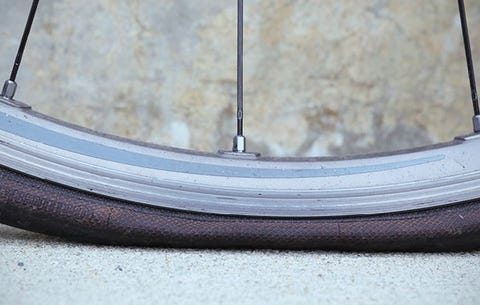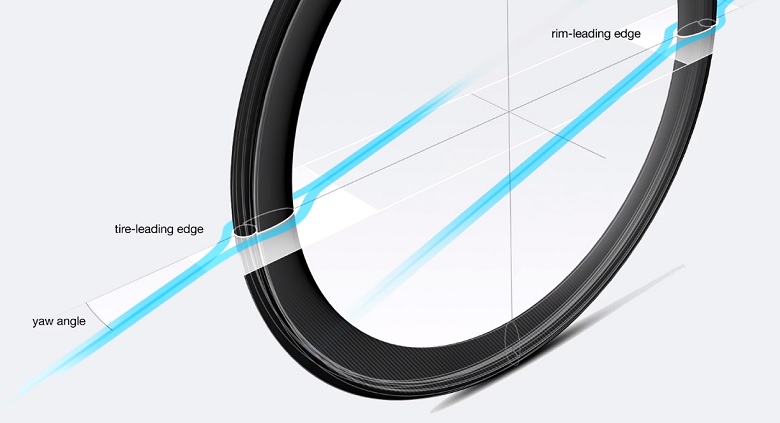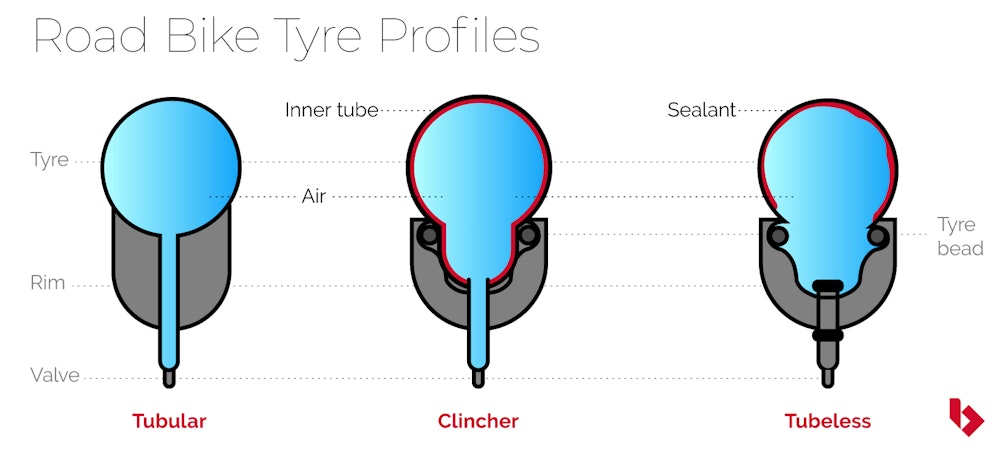Bike Tire Pressure. Save up to 74 Watts with these tips
Tire pressure has a strong impact on the rider's performance, and the ideal pressure can make you more efficient and save precious Watts. A compilation of scientific studies has brought to light gains that can impressively save 74 watts.
The FFT Cycling Science website has put together a series of studies on the science behind the tire calibration of our bikes and with that it obtained some really astonishing data.

1 - Low pressure tire - Saving 10 watts
Starting with the most obvious, but not the least, this is because you may not yet know the perfect pressure, but at least you can identify when you are riding with the tire very low.
Riding with low pressure can generate a loss of 10 watts of power and, often, a pressure 40% below the ideal drastically increases the rolling resistance, and consequently even more energy is lost, regardless of the type or compound of your tire.
However, the composition of the tire and how it behaves in lateral compression seems to be relevant. Tires with mixed compounds on the sides are showing excellent results, minimizing energy loss during lateral compression. We will deal with this in the following item.
2 - Tire with a lot of pressure - Saving 13 watts
Contrary to what most cyclists believe, the tire that is too full also loses energy. To start the topic on this discussion, a tire with more than 110 pounds for a 70 kg cyclist who rides on bad asphalt can represent a loss of 13 watts of power. But why?
In 2010 Fabian Cancellara received wheels and tires specifically designed for that year's Paris-Roubaix. The engineers involved noticed that thinner and very full tires created excessive vibration, and when observing this vibration more closely, a huge loss of traction and energy was mainly noticed.
In other words, the wheel bounced so much that it spun in the boulders of the dreaded Paris-Roubaix road.
With carbon wheels and wider tires, Fabian Cancellara found what was the perfect calibration for him at that time, that was, about 60 pounds.
For those who do not remember, this was the race that Fabian Cancellara was accused of using an engine in his frame, both the ability to accelerate and maintain speed on that terrible road in relation to his competitors. It was later proved that the cyclist was not cheating.

Speaking of numbers, on the worst surface in terms of rolling resistance for road bikes, the concrete floor, the cyclist can lose 16 to 20 watts by using excessive pressure. Likewise, on rough asphalt you can lose 10 to 13 watts.
Generally, a pressure between 100 and 110 pounds would suit most cyclists. Pressures over 130 pounds would only be recommended for extremely smooth floors such as velodromes.
At this point, the study suggests not a rule, but a calibration reference. 70kg cyclists would ride very well with:
- 160psi - velodromes or extremely smooth floors (only use this pressure on tires suitable for this demand) ;
- 110psi - New and smooth asphalt;
- 95psi - Common asphalt (as it is the most common floor, it serves as a reference for you that weighs 70 kg. If you are heavier add 2 pounds of pressure for every additional 10 kg );
- 70psi - Rough concrete and;
- 60psi - Portuguese stone floors, cobblestones and boulders ( with 28mm tires. Carbon wheels are advised, as they will not dent and help absorb impacts) .
3 - Tire Compounds - Saving 27 watts

In these tests it became clear that depending on the compound of the tire, it does not matter whether it is clincher, tubeless or tubular. In fact, the clincher tire with excellent CCR showed only 0.5 to 1 watts of energy savings over the others.
In a test with beginner cyclists ( FTP up to 200 watts ), intermediate ( FTP 250 to 300 watts ) and advanced cyclists ( FTP 350 to 400 watts ) with tires with a CRR ( rolling resistance coefficient ) of 0.029 vs 0.0031 vs 0.0050.
The result was a considerable difference between them ( between the tires ). The beginners had an increase of 1.15km / h in their speed using tires of excellent quality, intermediate of 1.10km / h and the advanced of 0.91km / h. And that makes a big difference on a 40km circuit.
In terms of time, the gain was 1:40 for beginners. While advanced riders had a gain of 01:20 seconds.
4 - Wheel and Tire Assembly - Saving 20 watts
Studies explain that the older wheels, with more square or pyramidal shapes, presented greater aerodynamic resistance, consequently, using more energy from the cyclist.

Currently, wheels like the C50, C60 and C85 have more toroidal shapes ( rounded ) and therefore break the aerodynamic resistance much more efficiently. This more modern shape enhances the speed gain and the maintenance of cruising speed
.
Carbon Wheel C50 Session

Carbon Wheel C60 Session

Carbon Wheel C85 Session
Consequently, tests in a wind tunnel made with a modern wheel like the Session's Carbon Wheels line , combined with the wider tires, showed incredible results simply by combining this set well.


The Session's Carbon Wheels are ready for tubeless and additionally are wider, enhancing this effect further.

In a headwind, the profile wheel with the widest tire, saved 9 watts. But as we have already presented here on the Session Blog, the candle effect will save an impressive 20 watts in the cross winds. And this result is absolutely incredible.
5 - Clincher vs Tubular vs Tubeless - Saving 5 watts
In fact, this discussion is very old, and although tubular tires are preferred by cyclists who like a good time trial, it seems that the most modern compounds have brought the clincher tire to an equal footing.
With a gain, however small, the tubular tire of good quality can save up to 5 watts for the rider.
6 - Tire weight - No significant result 0.0 watts
In all tests analyzed by FFT Cycling, no substantial difference was found. Even on tires with weight differences of 100 grams. Apparently, when the weight of the cyclist and the bike is added, this difference is not so significant.
In similar tires, that is, with a similar price range, the weight difference almost never exceeds 30 or 50 grams, which makes the comparison even more inconclusive.
However, it was noted that the lighter tires, if perfectly calibrated, present acceleration and slightly faster resumes.
7 - Tire Width - Saving 3 watts
Apparently the wider tire is not synonymous for more speed in itself. The tire compound is more relevant than the tire width, as we have already mentioned here. However, we have seen before ( item 4 ) how powerful the Tire and Wheel combo can be and we will see further on the aerodynamics of the tire.
Furthermore, applying the concepts of physics, if you inflate a tire with the widest splint and another with the thinnest splint with proportionally equal pressure. And yet, using the same bike and the same rider the surface of the tires in contact with the ground tend to be exactly the same.
The difference is that the wider tire leaves a more rounded mark on the ground, while the thinner tire leaves a thinner and longer mark.
On the contrary to what is heard around, a wider tire does not necessarily have more contact with the ground. To measure this, the test is very simple and done with paint on the floor. Then the tire track is calculated to find the amount that is in contact with the surface of the terrain.
In conclusion, the wider tire is slightly faster, but the difference is very small. From a 19 mm to a 23 mm tire, have been found to save 1 watt and from 23 mm to 25 mm it is 2 watts. And from 19 mm to 25 mm it is approximately 3 watts. But who today uses a 19 mm tire?
8 - Tire Aerodynamics - Saving 6 watts
A wider tire when properly matched to a high profile wheel can provide excellent gain. The economy in watts here is really expressive and has been widely explored by the fastest cyclists in the world.

A wide tire with a toroidal (rounded) wheel rim can save up to an incredible 30 watts for the rider under normal conditions.
At this stage of the test it was noted that in fact the shape of the tire counts a lot, to give you an idea, a tire tends to lose aerodynamic efficiency simply because it wears out and gets flatter.
This flatter surface can waste up to 1 watt of cyclist power. It is clear that choosing the widest and roundest tire is the smartest and can save up to 6 watts for the rider.
The Importance of Correct Bicycle Tire Pressure
We can conclude that the difference in cycling is in the details. Minor changes can bring big results.
Testing different calibrations, measuring the results and then comparing them must be an exercise for every amateur cyclist.



Leave a comment